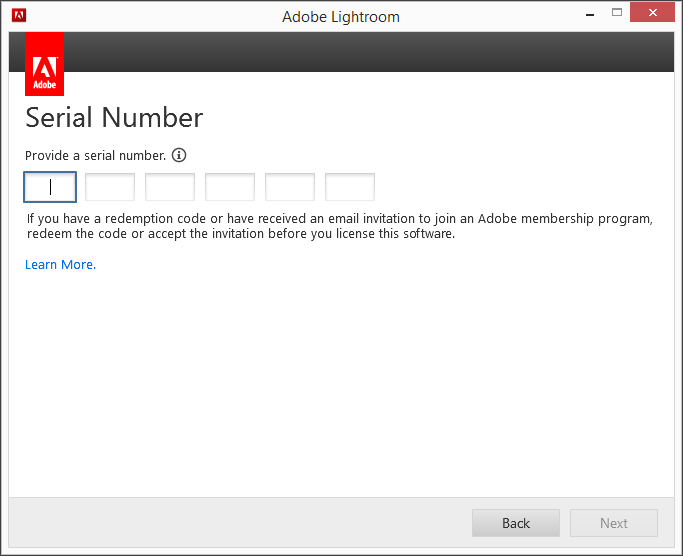![]()
At your desk or on the go. Lightroom is the cloud-based service that gives you everything you need to create, edit, organize, store, and share your photos across any device.
In contrast to other applications from this developer, such as Photoshop, modifying the characteristics of an image is so simple that a single push of a button can bring about all the changes you require.
Exposure, colour temperature, contrast, fill light, white balance... all of these can be changed with a few simple clicks. You can forget all about those complicated settings and parameters that are so difficult to understand in Photoshop.
You can also apply effects, such as grayscale, sepia, antique photographs, and so on. This is such a complete application that it can even correct defects in the calibration of the camera or the lenses.
What's more, Adobe Lightroom allows you to create slide shows and web albums with selected photos.
Finally, print the pictures and enjoy them with one of the many templates offered by Adobe Lightroom.
The ever-growing number of Instagram users, long with the new changes to the algorithm, make it harder than ever to get noticed on this social network. That's why it's a must to give your posts the utmost visual quality, and make them look as professional as possible. Read on to discover 20 tools to help you make sure your photos and videos stand out from the crowd.
Lightroom App For Windows
10 useful features in Adobe Photoshop Lightroom for Android The huge surge in smartphone photography has led to tons of editing tools appearing on Android. And when we're talking about retouching of both photos and images, Adobe rules the roost, with the Adobe Photoshop Lightroom app being one of our favorites. This powerful editor boasts tons of possibilities and we've condensed the most interesting ones here into our list of 10 Adobe Lightroom functions that you can't miss out on.

Adding photos to Lightroom involves a few simple steps.
Note:

Working with Lightroom on your mobile devices? See Import photos in Lightroom for mobile (Android) and Import photos in Lightroom for mobile (iOS).
Adobe Lightroom App Mac Pro
Lightroom makes a copy of the photos imported and uploads your full resolution original photos to the cloud. So, once you've imported the photos, you can consider deleting or moving the originals from their source, such as the memory card.
Connect the camera or card reader to your computer. If necessary, see your camera manufacturer's documentation for instructions on how to connect it to the computer.
Click icon at the upper-left corner of the window. Alternatively, choose File > Add Photos... from the menu bar. From the context-menu that appears, choose the camera.
Your images will be available to review before adding to Lightroom. This is described in Step 3 below.
Click icon at the upper-left corner of the window. Alternatively, choose File > Add Photos... from the menu bar. A dialog to select files from a local folder on your hard drive appears.
Note:
If a camera device or card reader is connected to your computer, clicking icon brings up a context menu. In this case, choose Browse from the context menu. Choosing this option brings up a dialog to select files or folders on your hard drive.
In the dialog that appears, do any of the following:
- Navigate and choose a folder containing the image files that you want to add. Then, click Review For Import (Mac)/Choose Folder (Win).
- Navigate and choose one or more image files that you want to add. Then, click Review For Import.
Your images will be available to review before adding to Lightroom. This is described in Step 3 below.
You're looking at previews of your images. In this screen, you can select the images you'd like to add to Lightroom.
Select photos for import
- To select a photo for import, move the pointer over that photo and click the gray circular overlay that appears at the upper-left corner of the thumbnail. A blue check mark in the upper-left corner of the thumbnail indicates that the photo is selected for import.
- To select all the thumbnails appearing in the import screen, check the Select All option at the upper-right corner.
- To deselect any photo, click the blue check mark in the upper-left corner of the thumbnail.
Note:
Duplicate photos
While adding photos, Lightroom automatically detects 'duplicate' photos. In the import screen, a Previously Added text overlay on a thumbnail indicates that you've already added that photo in Lightroom. You can't add photos that are identified as duplicate.
If you think that a photo has been incorrectly identified as duplicate, you can work around this issue by renaming the photo in Explorer (Win)/Finder (Mac) and then adding it in Lightroom.
Add photos to an Album
Click the Add To Album drop-down list and choose any of the following:
- To add the selected photos but not as part of any Album, choose None.
- To create an Album and add the selected photos into the new Album, choose New.
- To add the selected photos into an existing Album, choose any of Album names displayed in the drop-down list.
Note:
When you add photos, Lightroom saves them to the local storage location specified in the preferences. Therefore, the used disk space displayed in the Local Storage preferences may temporarily indicate a higher value. Once these photos are fully synced to the cloud, Lightroom manages the used space so that your photos don’t fill up your hard drive space.
Your recently added photos appear in the grid.
Starting from Lightroom desktop version 3.2, you can directly drag-and-drop photos from your device to a desired album in the Albums panel.